Light, fluffy and bursting with fresh lemon flavour, this lemon poppyseed cake is the perfect dessert for any occasion. Featuring a tangy lemon cream cheese frosting and ultra-tender crumb, it is a lemon lover’s dream!
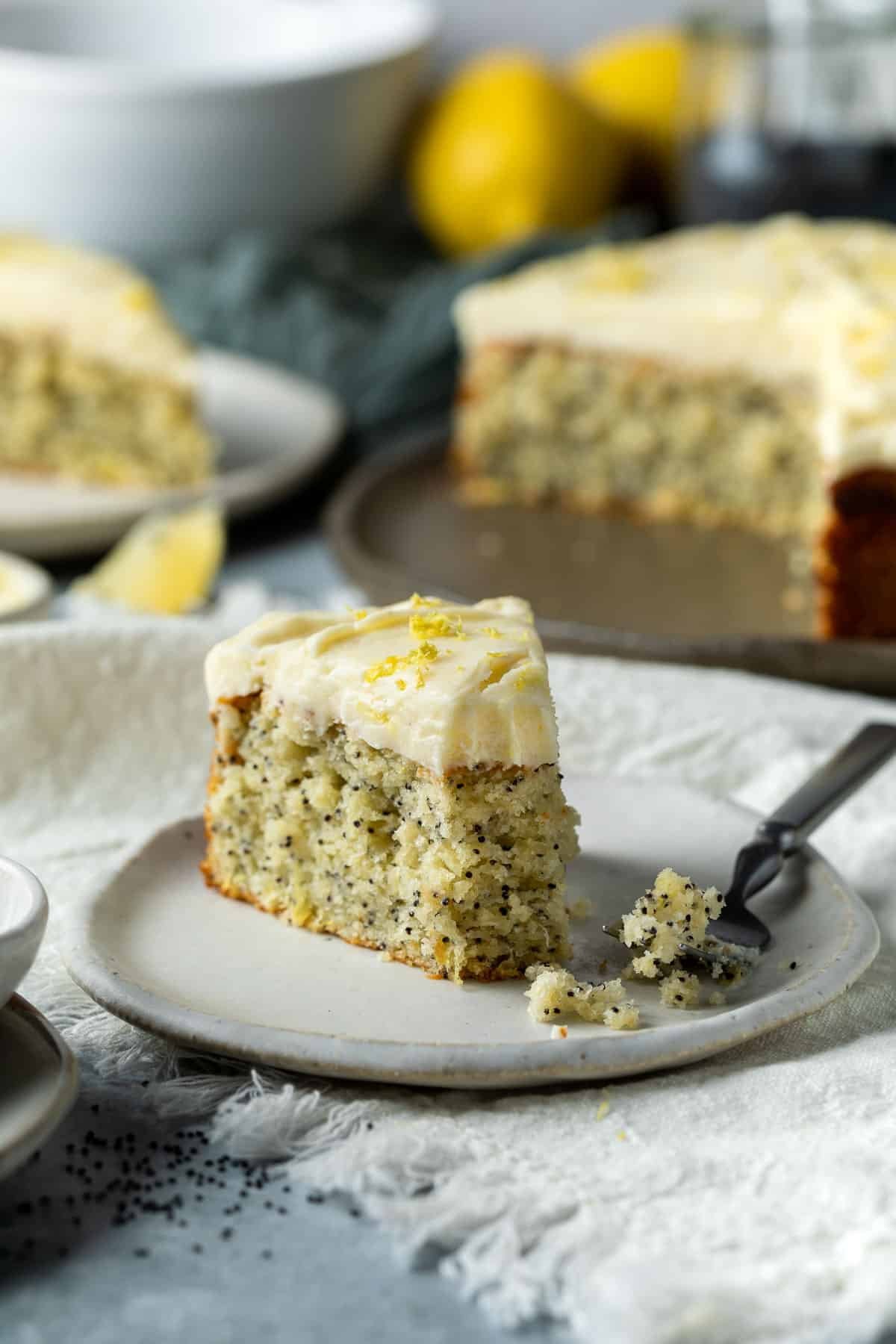
Why you’ll love this recipe
- Easy to make – this cake uses simple pantry ingredients and comes together in a few easy steps, so you can make it whenever you’re in the mood for something deliciously lemony!
- Rich and buttery – it’s tender, moist and flavourful, speckled with plenty of poppyseeds. Perfect with a cup of tea or coffee.
- Full of lemon flavour – the perfect balance of tart and sweet. Fresh lemon zest infused into sugar in the cake batter adds even more lemon flavour.
- Perfect for any occasion – serve this gorgeous, citrusy cake for morning or afternoon tea, parties, gatherings and more.
If you love lemons, try my lemon butter, lemon curd slice and lemon syrup cake as well!
Ingredients you will need
** This post contains tips and instructions to achieve the best possible results. This photo is a great guide for when you are in the supermarket, but for full ingredient quantities and methods, please scroll down to the detailed recipe card below!
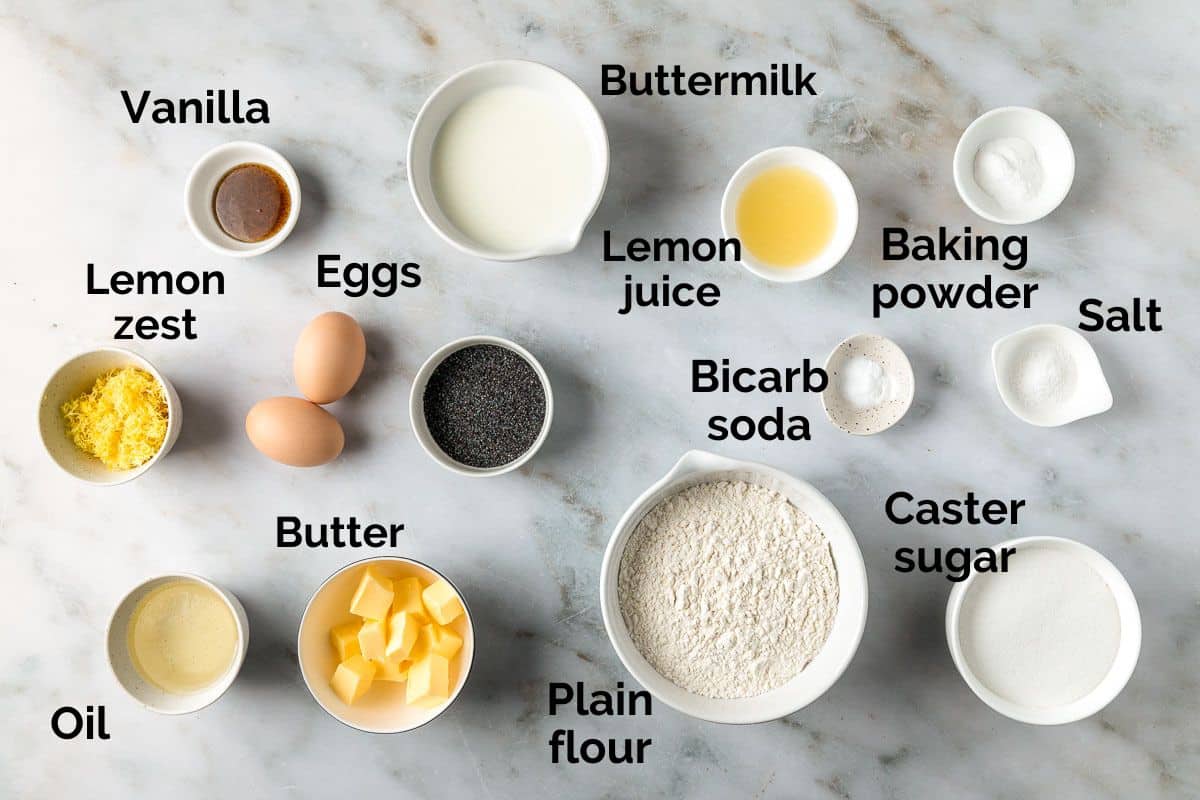
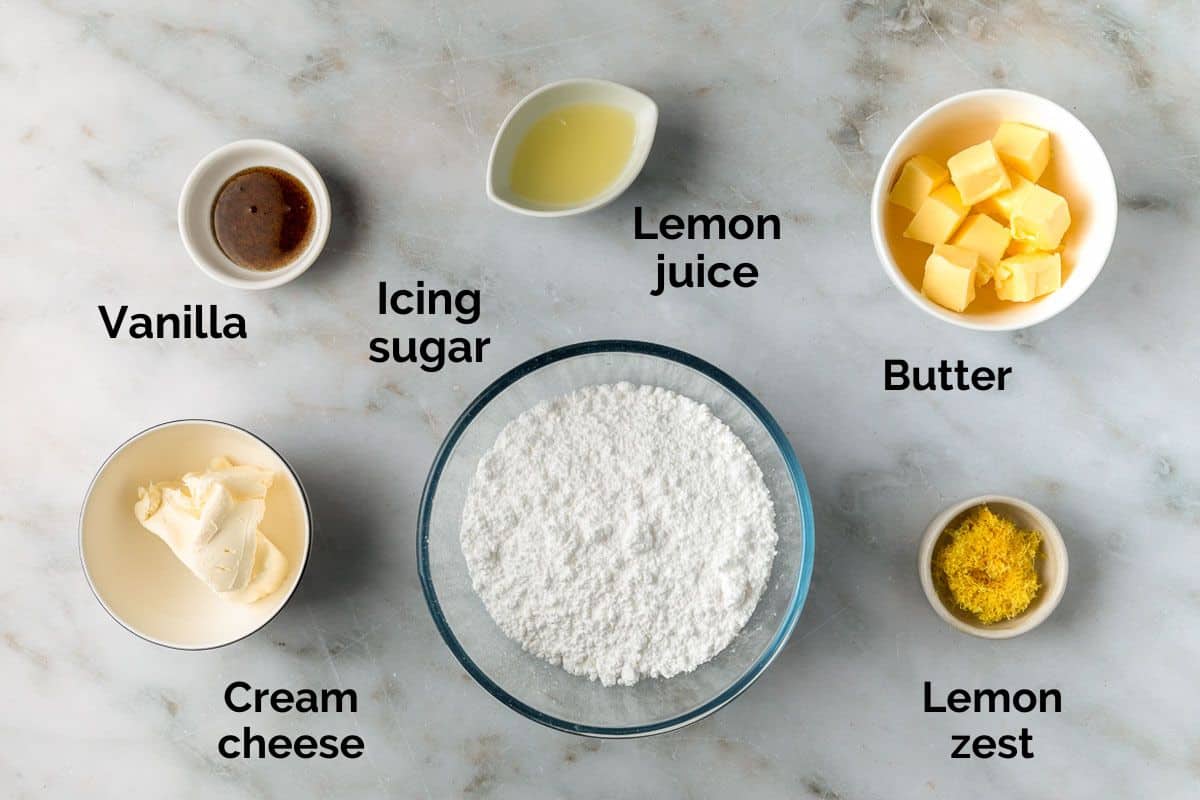
- Fresh lemons – both the zest and juice of fresh lemons are used, adding a bright and tangy lemon flavour that you won’t achieve with bottled juice or artificial flavours. I recommend Meyer lemons for their sweeter profile and high juice content, but any type of fresh lemon will work.
- Softened butter – bring the butter to room temperature before beating with the oil and sugar. Room temperature ingredients will come together more evenly help the cake to cook evenly.
- Eggs – provide structure and richness to the cake. Make sure the eggs are at room temperature before use.
- Buttermilk – adds richness, moisture and tangy flavour to the cake. If you don’t have buttermilk, you can make your own by adding a tablespoon of lemon juice to 1 cup of milk. Set aside for 5-10 minutes before use.
- Vegetable oil – a combination of butter and oil makes the cake ultra-moist with a rich, buttery flavour. Use vegetable or canola oil, or another neutral tasting oil.
- Leavening agents – this lemon cake uses both bicarb soda (baking soda) and baking powder. Make sure they are fresh and replace them in your pantry if they have expired. Be accurate when measuring, to ensure the correct amount is mixed into the cake batter.
- Poppyseeds – poppyseeds enhance the cake by providing a delightful crunch and subtle nutty flavour, perfect to contrast the bright lemon flavour. Poppyseeds can be found in the spice aisle of supermarkets and are best stored in a cool, dry place in an airtight container for longevity.
- Plain flour – plain, all-purpose flour provides structure to the cake. Sift the flour and measure it accurately, for best results. Too much flour and the cake will become dry.
- Cream cheese – for the lemon cream cheese frosting. I recommend using regular, full-fat cream cheese. Light or low-fat cream cheese will have a runnier consistency and isn’t as flavourful. Let the cream cheese come to room temperature before beating, to avoid a lumpy frosting.
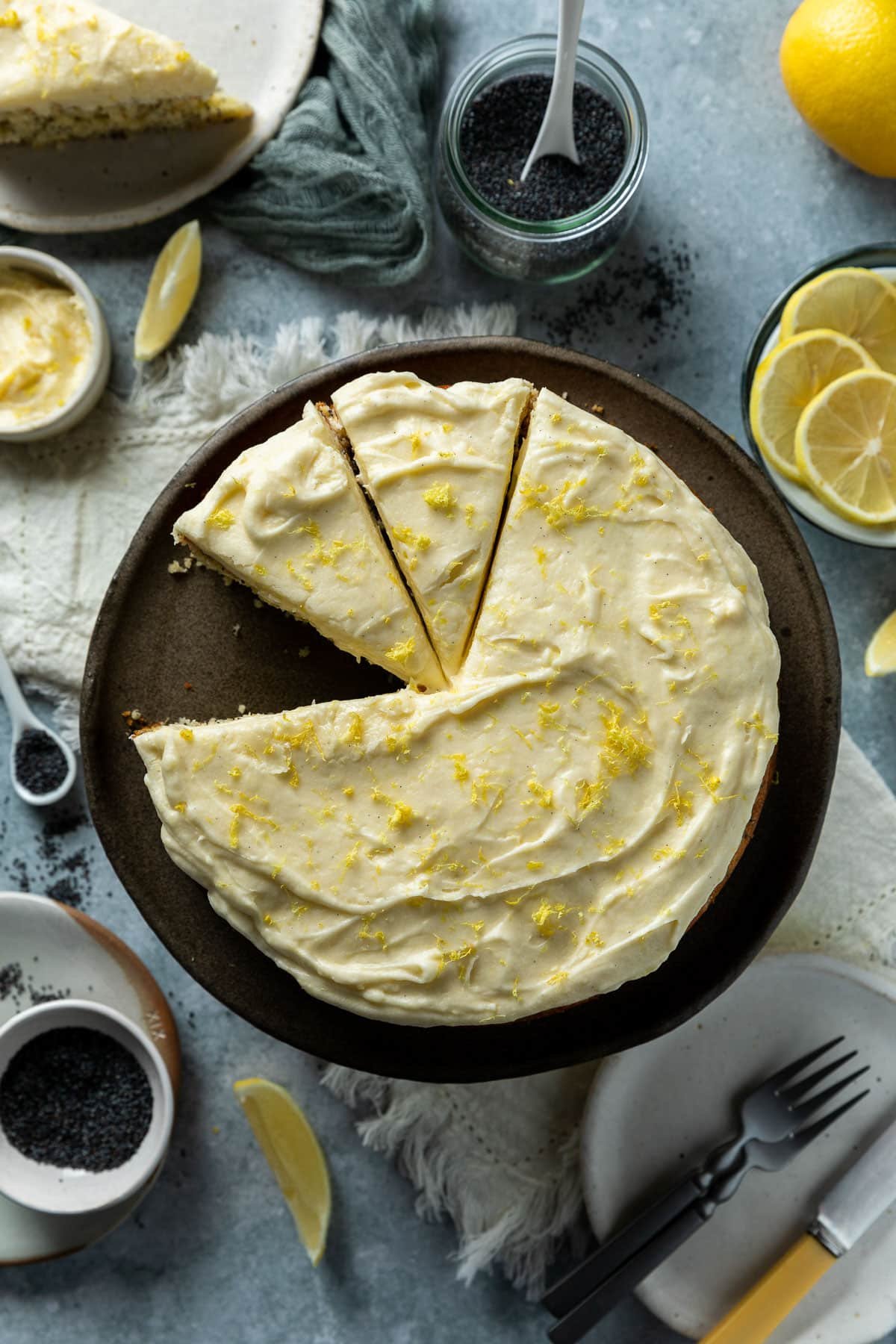
Step by step instructions
Full ingredient notes and quantities can be found in the detailed recipe card below. But here is a brief overview of what you can expect;
Step 1; Mix the dry ingredients (flour, baking powder, bicarb soda and poppyseeds) together in a bowl, until combined. Set aside.
Step 2; In a separate bowl, stir the lemon zest into the caster sugar. This helps to release the oils from the zest, which infuses more lemon flavour into the cake.
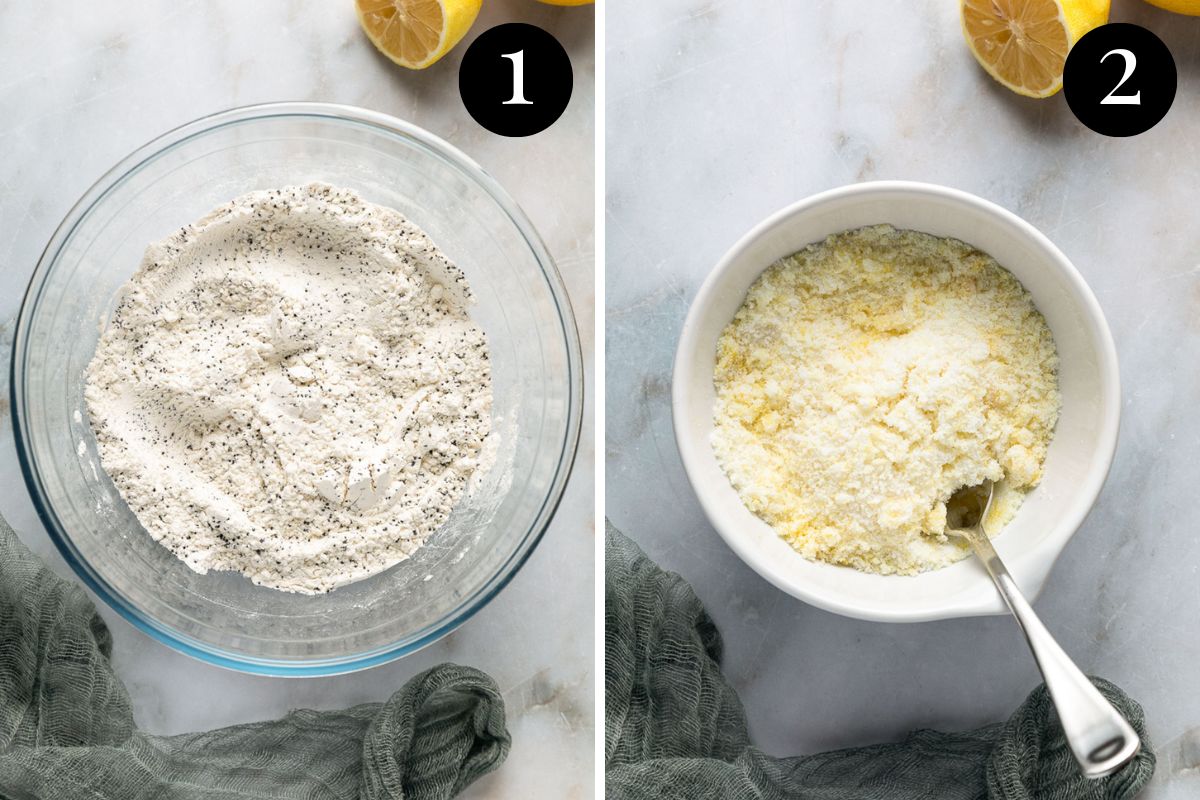
Step 3; Make the cake batter; beat the softened butter and oil together for 2-3 minutes, until smooth and creamy. (This will only work if the butter is completely soft).
While beating, gradually add the caster sugar to the butter and oil mixture and beat on high for a further 2-3 minutes, until fluffy and pale.
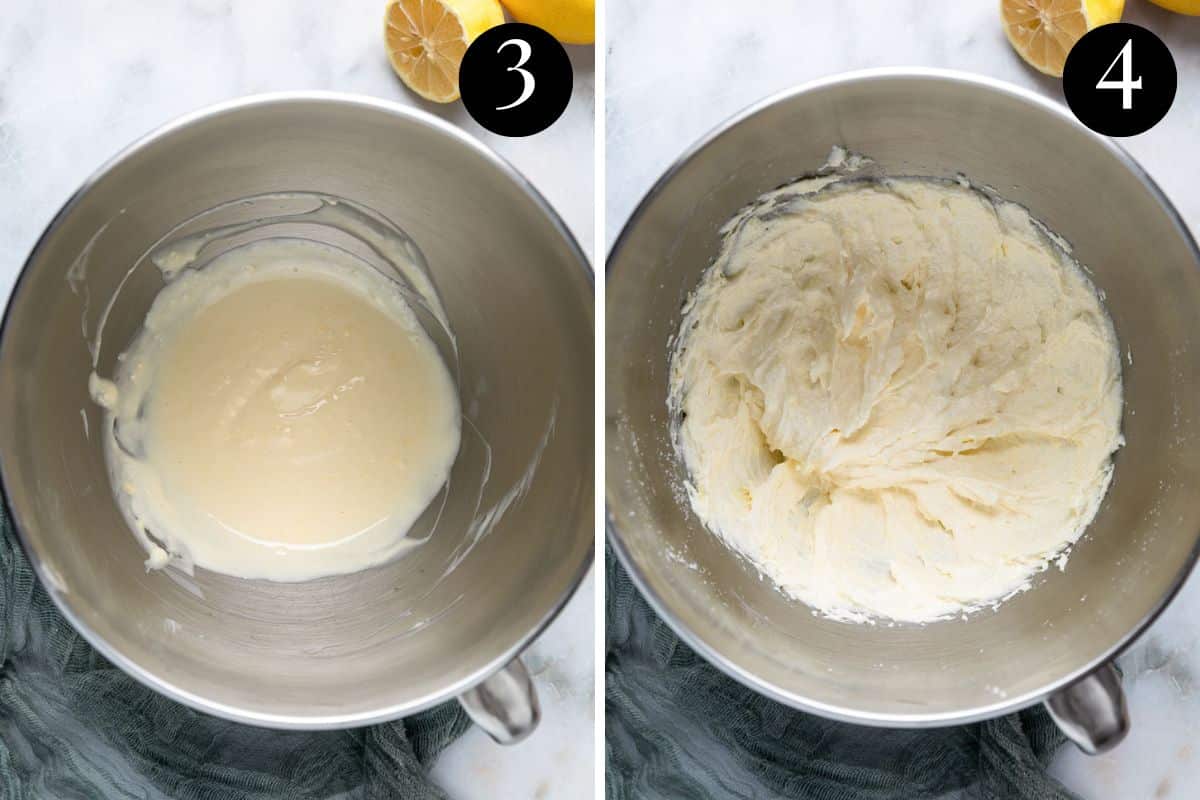
Beat in the eggs, one at a time, scraping down the bowl between each addition. Add the vanilla.
Alternate mixing in the wet ingredients (buttermilk and lemon juice) with the dry ingredients (flour mixture) in 3-4 batches, starting with the buttermilk and lemon juice and finishing with the dry ingredients. Don’t overmix; it’s ok if there are a few small lumps remaining in the batter.
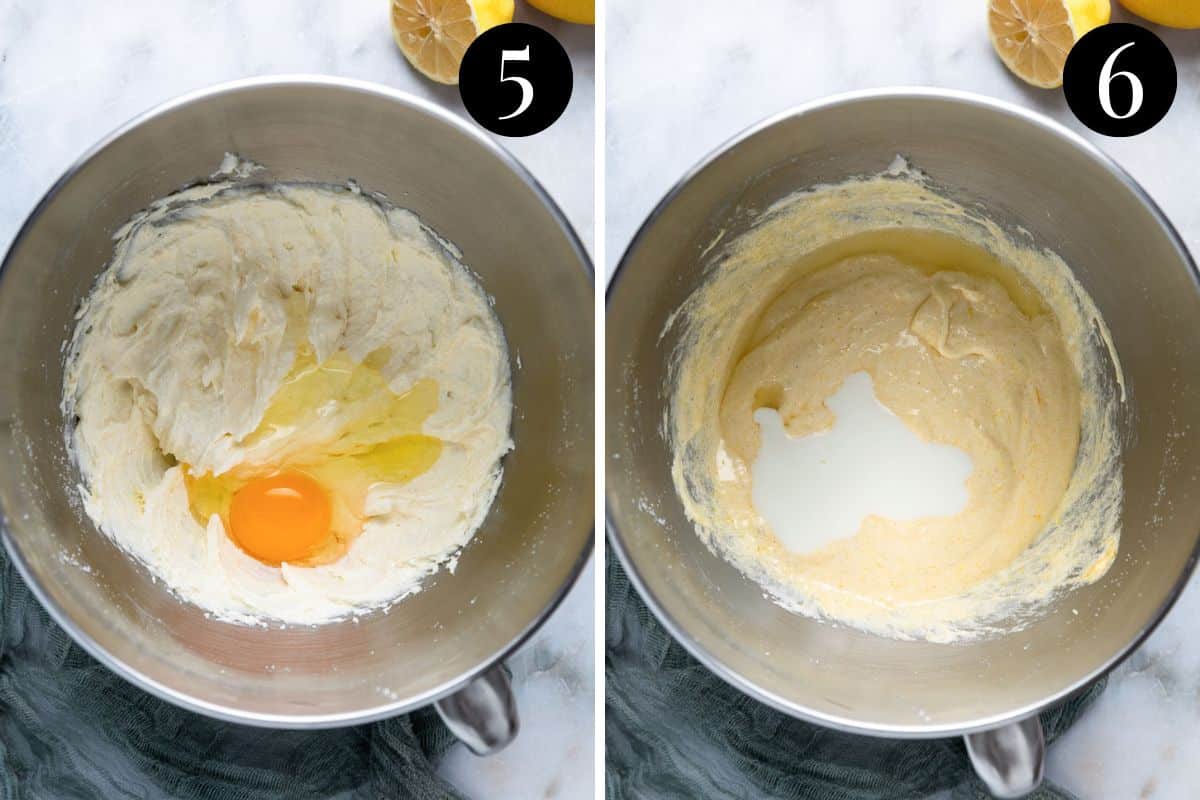
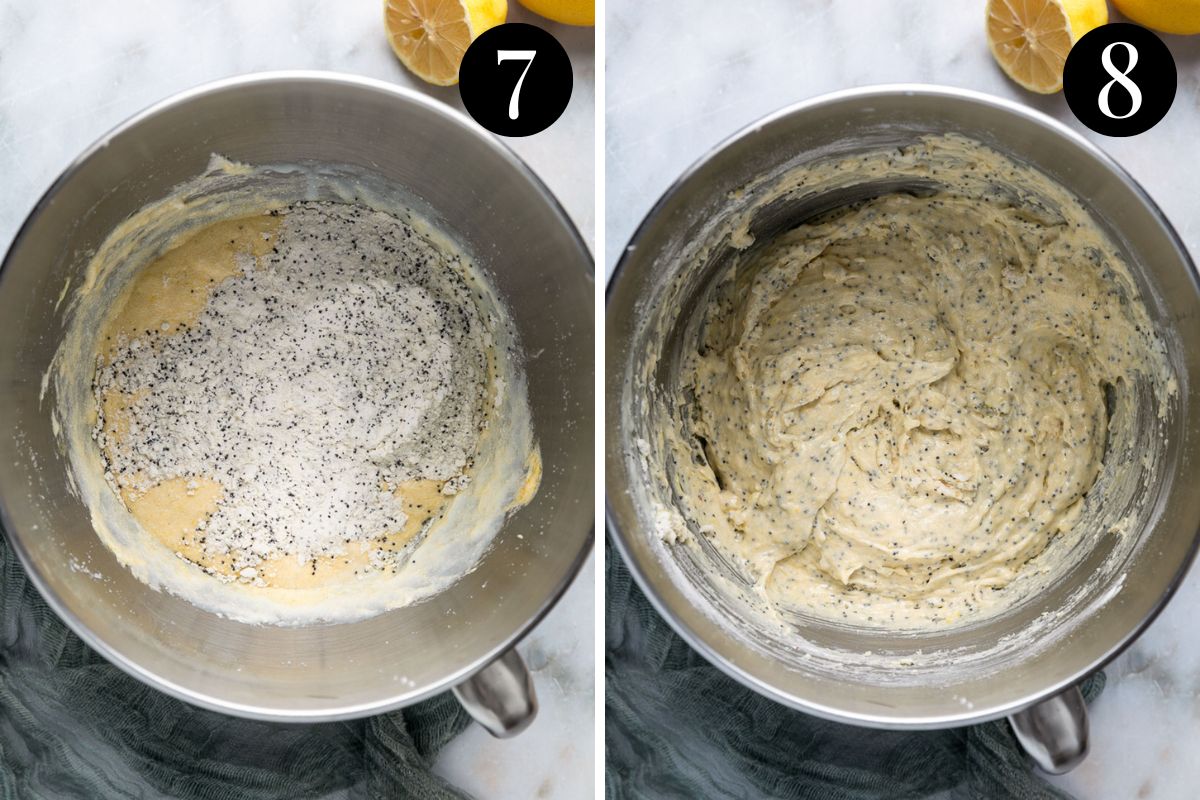
Add the mixture to a lined cake tin (full instructions in the recipe card below) and bake until the cake is a light golden brown and springs back when pressed. A skewer inserted into the middle of the cake should come out clean.
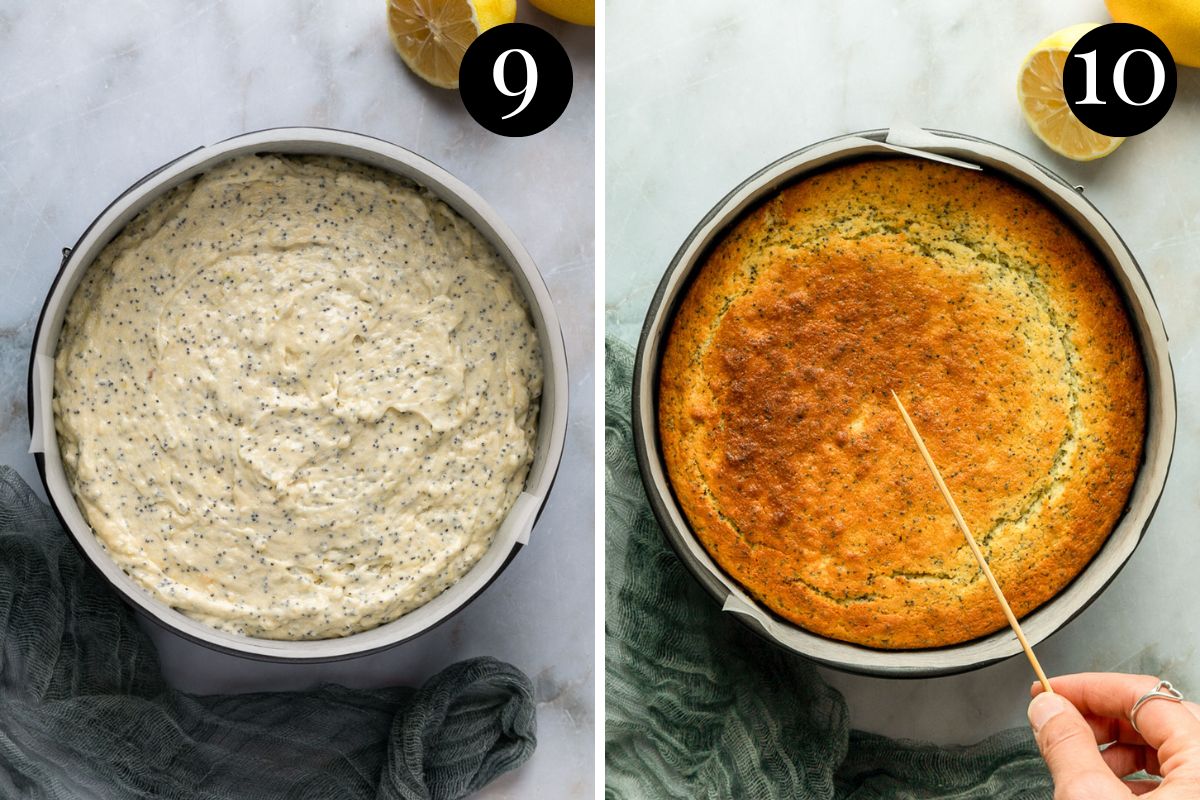
For the frosting;
Beat the softened butter and cream cheese together until smooth and pale.
Add the icing sugar, vanilla, lemon zest and lemon juice and beat on low speed, until combined and smooth.
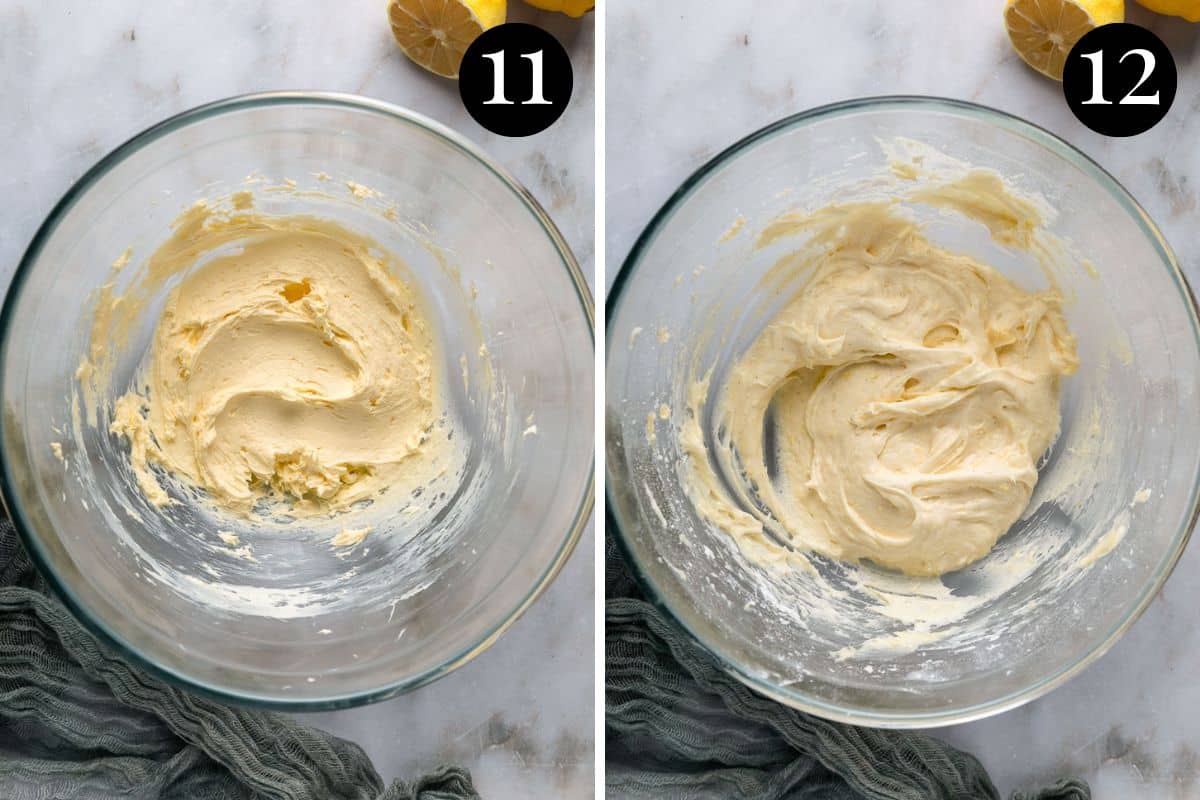
Once the cake is completely cooled, spread the frosting over the top, slice and serve.
Expert tips
- Use room temperature ingredients. Allow the eggs, buttermilk and butter come to room temperature before using. This helps the ingredients to come together easily and the cake to cook evenly.
- Sift the flour before mixing with the other dry ingredients. This makes the flour lighter and airier, as well as breaking up any lumps.
- Measure your flour. Adding too much flour will result in a dry, dense lemon cake. The easiest way to measure the flour is by using a kitchen scale. If you don’t have one, fluff the flour with a spoon, sprinkle it into the measuring cup and use a knife to level the top. Scooping the flour straight from the container can overpack the measuring cup.
- Don’t overmix the cake. Overmixing will result in a tough and rubbery cake. It’s ok if there are a few small lumps remaining in the batter.
- Zest the lemons before juicing them. And only zest the yellow parts. The white layer underneath is bitter.
- To get more lemon juice from your lemons, roll them under your hands on the benchtop to loosen the juice.
- Make sure the cake has cooled completely before frosting. Otherwise, the butter/cream cheese frosting will melt and slide off the cake.
FAQs
As the cake is topped with a butter/cream cheese frosting, it needs to be refrigerated for safe consumption. Store any leftovers in an airtight container in the fridge for 3-4 days. The cake is best eaten at room temperature (it’s much softer this way), so allow any slices to return to room temperature for 10-20 minutes before eating.
This cake freezes beautifully. I recommend freezing it without the frosting, but frosted slices freeze well too. Simply wrap the cake in a couple of layers of plastic wrap and store in an airtight container in the freezer for up to 3 months. Bring the cake to room temperature before serving.
Spread the lemon cream cheese frosting over the cake and serve with an extra sprinkle of lemon zest. A dollop of whipped cream, fresh berries or homemade lemon curd also make great additions.
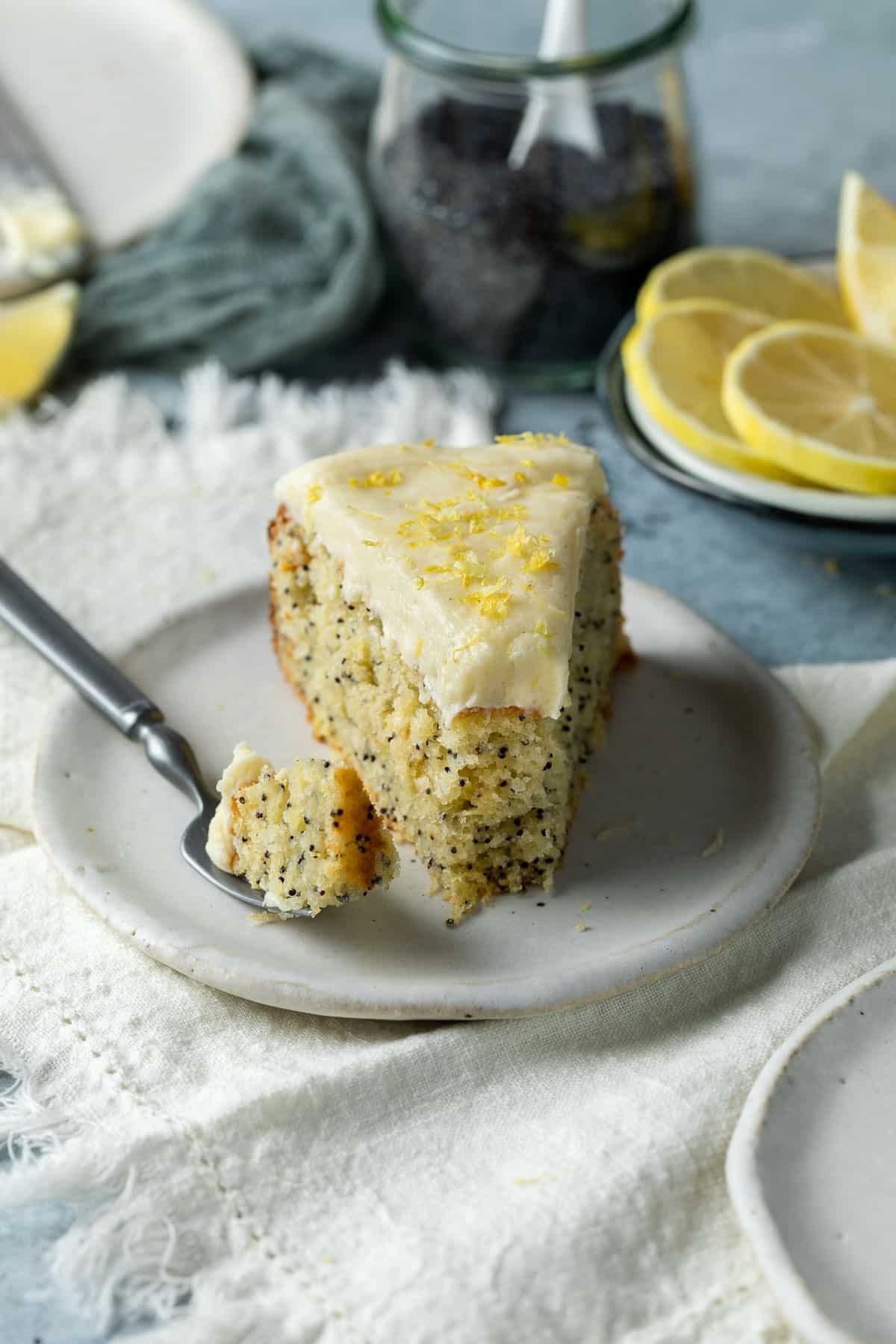
Related recipes
Tried this recipe? Please leave a star ⭐⭐⭐⭐⭐ rating or leave a review below and let me know how you went!
Hungry for more? Subscribe to my newsletter and follow along on Facebook, Instagram and Pinterest for the latest recipes and news.
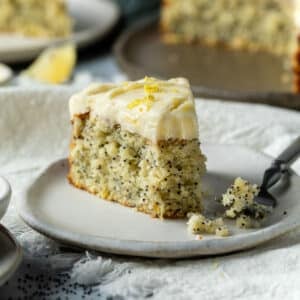
Lemon Poppyseed Cake
Equipment
- 1 springform cake tin (20 cm) with removeable base.
- electric beaters handheld or stand mixer.
Ingredients
For the cake
- 225 grams plain flour sifted
- ½ teaspoon salt regular table salt
- 1 teaspoon baking powder
- ¼ teaspoon bicarb soda baking soda
- 3 tablespoons poppyseeds
- 200 grams caster sugar
- zest of 2 large lemons
- 75 grams unsalted butter softened at room temperature. Plus extra butter, for greasing.
- 75 grams vegetable oil
- 2 large eggs room temperature
- 1 teaspoon vanilla bean paste or vanilla extract
- ⅔ cup buttermilk room temperature
- ⅓ cup lemon juice
For the cream cheese frosting
- 80 grams unsalted butter softened at room temperature
- 80 grams cream cheese regular, full-fat cream cheese (not the spreadable kind), softened at room temperature
- 280 grams icing sugar
- 1 teaspoon vanilla bean paste or vanilla extract
- zest of 1 lemon
- 1-2 tablespoons lemon juice
Instructions
- Pre-heat oven to 180°C/356 F. Use butter to grease a 20 cm springform cake tin and line the bottom of the tin with baking paper.
For the cake;
- Whisk the sifted flour, salt, baking powder, bicarb soda and poppyseeds together in a bowl, until combined. Set aside.
- In a small, separate bowl, combine the caster sugar and lemon zest together and stir to infuse the lemon flavour into the sugar. Set aside.
- In a large mixing bowl, use handheld beaters (or a standmixer with a whisk attachment) to beat the softened butter and oil together for 2-3 minutes, until smooth and creamy. (This will only work if the butter is completely soft).
- While beating, gradually add the sugar to the butter and oil mixture and beat on high for a further 2-3 minutes, until fluffy and pale yellow.
- Beat in the eggs, one at a time, scraping down the bowl between each addition. Add the vanilla.
- Alternate mixing in the wet ingredients (buttermilk and lemon juice) with the dry ingredients (flour mixture) in 3-4 batches, starting with the buttermilk and lemon juice and finishing with the dry ingredients. Be careful not to overmix; it’s ok if there are a few small lumps remaining in the batter.
- Gently pour the mixture into the prepared cake tin and smooth the top.
- Bake for 40-45 minutes, or until the cake is a light golden brown and springs back when pressed. A skewer inserted into the middle of the cake should come out clean.
- Transfer the cake to a wire rack to cool completely.
For the cream cheese frosting;
- When the cake has completely cooled, prepare the frosting.
- Beat the softened butter and cream cheese together until smooth and pale.
- Add the icing sugar, vanilla, lemon zest and 1 tablespoon of the lemon juice and beat on low speed, until combined. Increase the speed to medium and beat the frosting until completely smooth. Add a further tablespoon of lemon juice, if needed, to reach your desired consistency.
- Spread the frosting over the cooled cake, slice and serve.
Notes
- Use fresh lemons. We are using both the zest and juice, and you won’t get the same flavour from bottled juice or artificial flavourings.
- Use room temperature ingredients. Allow the eggs, buttermilk and butter come to room temperature before using. This helps the ingredients to come together easily and the cake to cook evenly.
- Sift the flour before mixing with the other dry ingredients. This makes the flour lighter and airier, as well as breaking up any lumps.
- Measure your flour. Adding too much flour will result in a dry, dense lemon cake. The easiest way to measure the flour is by using a kitchen scale. If you don’t have one, fluff the flour with a spoon, sprinkle it into the measuring cup and use a knife to level the top. Scooping the flour straight from the container can overpack the measuring cup.
- Don’t overmix the cake. Overmixing will result in a tough and rubbery cake. It’s ok if there are a few small lumps remaining in the batter.
- Zest the lemons before juicing them. And only zest the yellow parts. The white layer underneath is bitter.
- To get more lemon juice from your lemons, roll them on the benchtop to loosen the juice.
- Make sure the cake has cooled completely before frosting. Otherwise, the butter/cream cheese frosting will melt and slide off the cake.
- Storage; as the cake is topped with a butter/cream cheese frosting, it needs to be refrigerated for safe consumption. Store any leftovers in an airtight container in the fridge for 3-4 days. The cake is best eaten at room temperature (it’s much softer this way), so allow any slices to return to room temperature for 10-20 minutes before eating.
- Freezing; I recommend freezing the cake without the frosting and frosting it fresh when you want to eat it, but frosted slices freeze well too. Simply wrap the cake in a couple of layers of plastic wrap and store in an airtight container in the freezer for up to 3 months. Bring the cake to room temperature before serving.
- Please note that the nutrition information is based on the cake being divided into 10 pieces, with one piece being one serve. The nutritional information is an estimate only and does not take into account any additional toppings or sides served with the cake.
- This recipe is made using Australian metric cups and spoon measurements. Any reference to cups or spoons in this recipe is in Australian metric. Due to cup sizes varying from country to country, I advise adjusting if necessary.


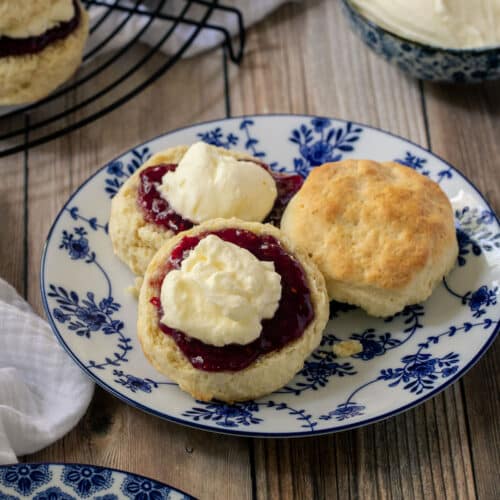
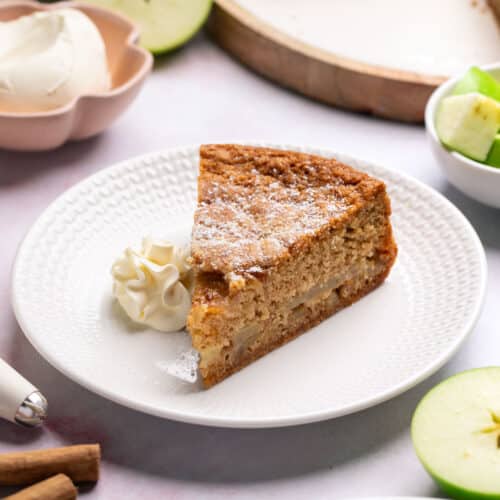
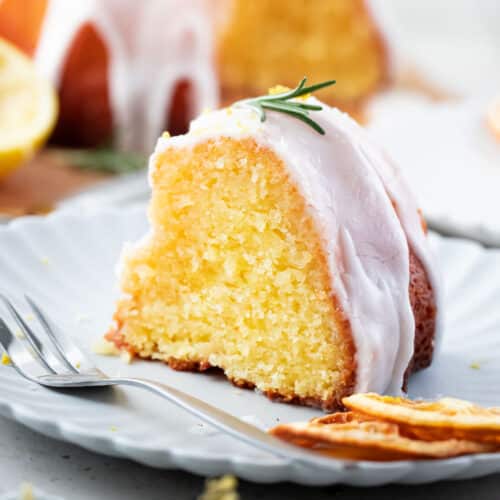
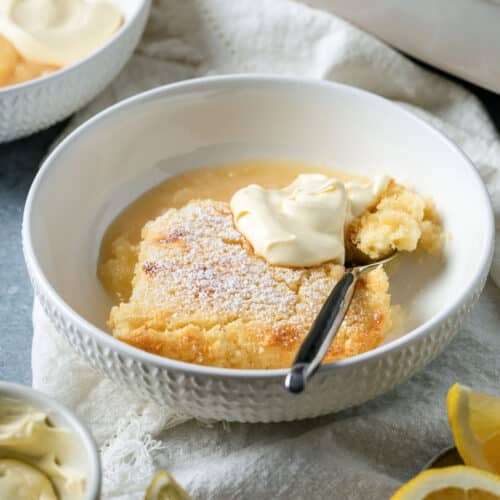

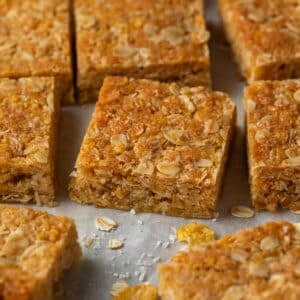


Leave a Reply